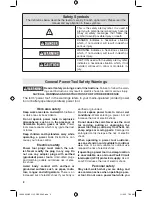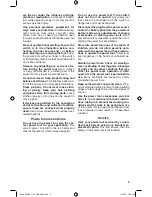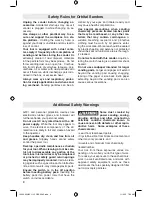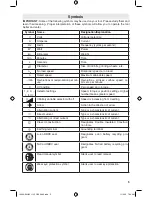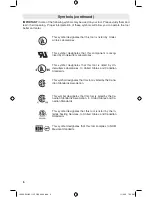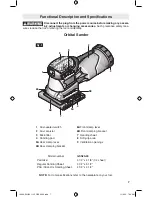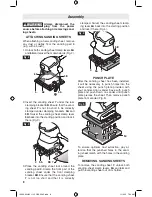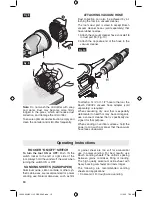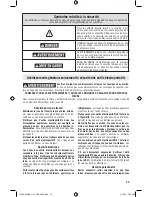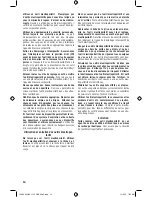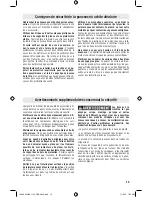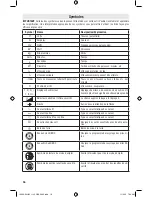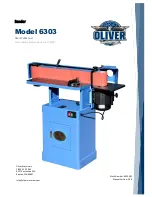
4
Additional Safety Warnings
GFCI and personal protection devices like
electrician’s rubber gloves and footwear will
further enhance your personal safety.
Do not use AC only rated tools with a DC
power supply. While the tool may appear to
work, the electrical components of the AC
rated tool are likely to fail and create a hazard
to the operator.
Keep handles dry, clean and free from oil
and grease. Slippery hands cannot safely
control the power tool.
Develop a periodic maintenance schedule
for your tool. When cleaning a tool be care-
ful not to disassemble any portion of the
tool since internal wires may be misplaced
or pinched or safety guard return springs
may be improperly mounted. Certain clean-
ing agents such as gasoline, carbon tetrachlo-
ride, ammonia, etc. may damage plastic parts.
Ensure the switch is in the off position
before inserting battery pack. Inserting the
battery pack into power tools that have the
switch on invites accidents.
Some dust created by
power sanding, sawing,
grinding, drilling, and other construction
activities contains chemicals known to
cause cancer, birth defects or other repro-
ductive harm. Some examples of these
chemicals are:
• Lead from lead-based paints,
• Crystalline silica from bricks and cement and
other masonry products, and
• Arsenic and chromium from chemically-
treated lumber.
Your risk from these exposures varies, de-
pending on how often you do this type of work.
To reduce your exposure to these chemicals:
work in a well ventilated area, and work with
approved safety equipment, such as those
dust masks that are specially designed to filter
out microscopic particles.
Safety Rules for Orbital Sanders
Unplug the sander before changing ac-
cessories. Accidental start-ups may occur if
sander is plugged in while changing an ac-
cessory.
Use clamps or other practical way to se-
cure and support the workpiece to a sta-
ble platform. Holding the work by hand or
against your body is unstable and may lead to
loss of control.
Your tool is equipped with a dust canis-
ter, empty it frequently, after completion of
sanding and before storing the sander. Be
extremely careful of dust disposal, materials
in fine particle form may be explosive. Do not
throw sanding dust on an open fire. Combus-
tion from mixture of varnishes, lacquers, poly-
urethane, oil or water with dust particles can
occur if there is a static discharge, spark intro-
duced in the box, or excessive heat.
Always wear eye and respiratory protec-
tion for dusty applications and when sand-
ing overhead. Sanding particles can be ab-
sorbed by your eyes and inhaled easily and
may cause health complications.
Use special precautions when sanding
chemically pressure treated lumber, paint
that may be lead based, or any other ma-
terials that may contain carcinogens. A
suitable breathing respirator and protective
clothing must be worn by all persons enter-
ing the work area. Work area should be sealed
by plastic sheeting and persons not protected
should be kept out until work area is thorough-
ly cleaned.
Do not wet sand with this sander. Liquid en-
tering the motor housing is an electrical shock
hazard.
Do not use sandpaper intended for larger
sanding pads. Larger sandpaper will extend
beyond the sanding pad causing snagging,
tearing of the paper or kick-back. Extra paper
extending beyond the sanding pad can also
cause serious lacerations.
1600A00HX5 11-15 GSS20-40.indd 4
11/9/15 7:22 AM


